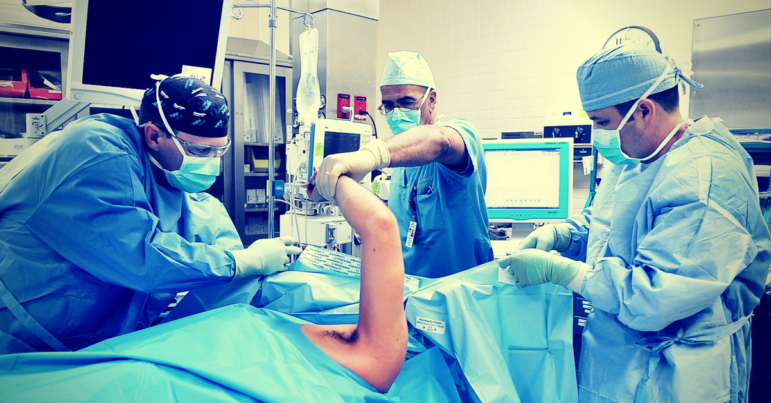Last year, the ORBITA trial made waves in the cardiology community by finding that putting in a stent for patients with stable angina did not improve their pain significantly more than a placebo surgery. This study not only overturned the conventional wisdom about stents, but has called into question the effectiveness of procedures in numerous specialties that have been performed for decades on the basis of assumed clinical effectiveness.
In short, if stents don’t work, what else doesn’t work?
For one, arthroscopic surgery for shoulder pain. A new study in The Lancet by Dr. David Beard and other members of the Can Shoulder Arthroscopy Work (CSAW) study group finds that patients with shoulder pain who received surgery to remove bone spurs and soft tissue from their shoulder do not feel better than patients who received a “sham” surgery (arthroscopy with no removal of bone spurs or tissue).
In the trial, 90 patients were given the surgery, 94 got a sham surgery, and 90 received no treatment. After six months, the patients reported their level of shoulder of pain and functionality using the Oxford Shoulder Score. The scores for patients who received the actual surgery were no better than those of patients who received the sham surgery (in fact, the scores were slightly lower on average).
While the scores of patients who received a procedure were higher than those who received no treatment, the differences were small and not clinically significant. The authors attribute this small difference to a placebo effect or patients receiving rehabilitation therapy.
The removal of bone spurs and tissue from the shoulder, known as subacromial decompression, has been used by orthopaedics to relieve outer shoulder pain since 1972, despite the lack of evidence that the procedure helps more than a placebo. The procedure makes sense logically – if shoulder pain is caused by rotator cuff tendons and bone spurs or tissue rubbing against each other, then removing these would eliminate the contact and fix the problem. But as we found out with ORBITA, just because a procedure makes sense doesn’t mean it works in practice.
“The burden of proof now rests on those who wish to defend the standpoint that shoulder arthroscopy is more effective than non-surgical interventions.”
Dr. Berend Schreurs and Dr. Stephanie van der Pas
In an accompanying commentary, Dr. Berend Schreurs and Dr. Stephanie van der Pas identify a few limitations of the study. The sample size was reduced by patients who did not receive the assigned treatment, and a long waiting list for surgery meant that some patients who were only 2 months out of surgery were compared with patients who were 6 months into the no-treatment option. Also, the patients who did not receive surgery were not given rehabilitation treatment, which may have contributed to their slightly lower scores.
Despite these limitations, Shreurs and van der Pas acknowledge that this study changes the conversation on how we treat shoulder pain, and how we talk to patients about their options.
“The burden of proof now rests on those who wish to defend the standpoint that shoulder arthroscopy is more effective than non-surgical interventions,” they write.
